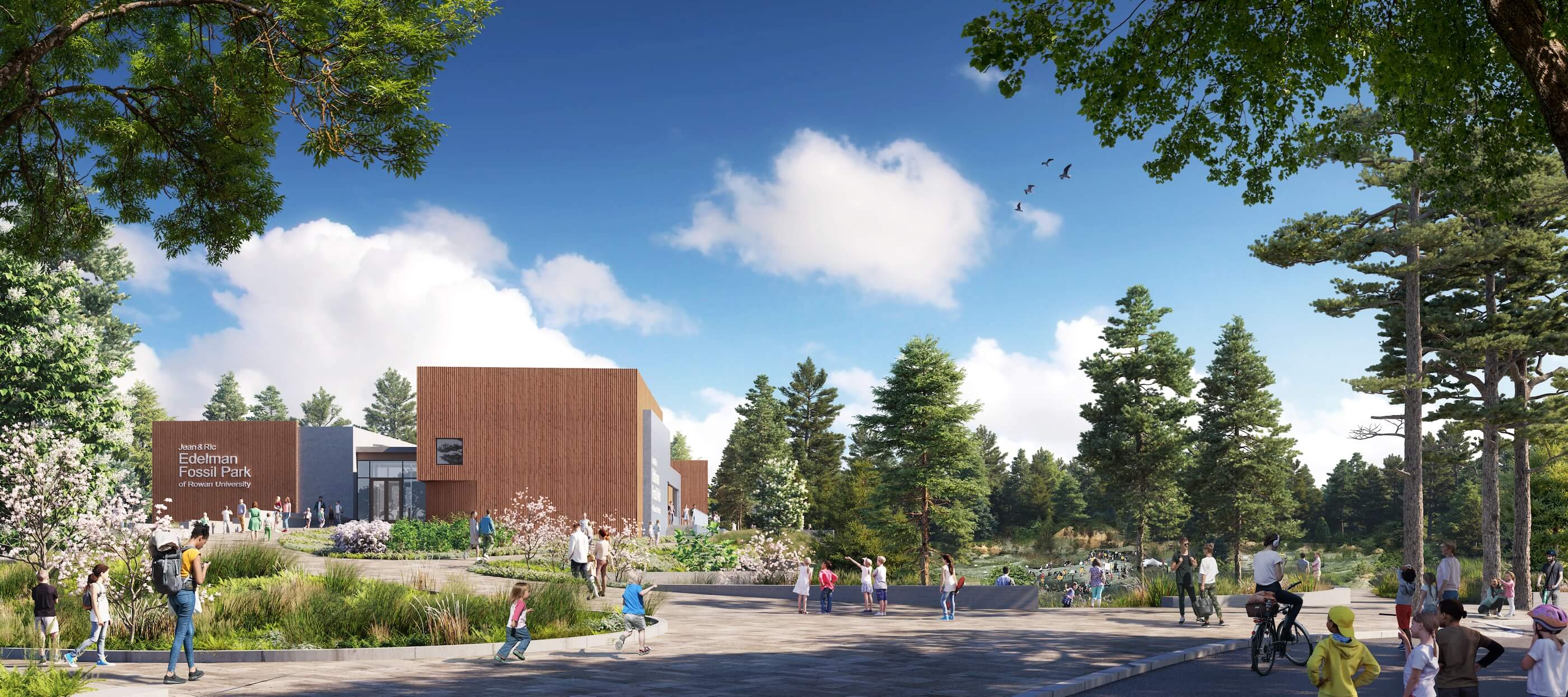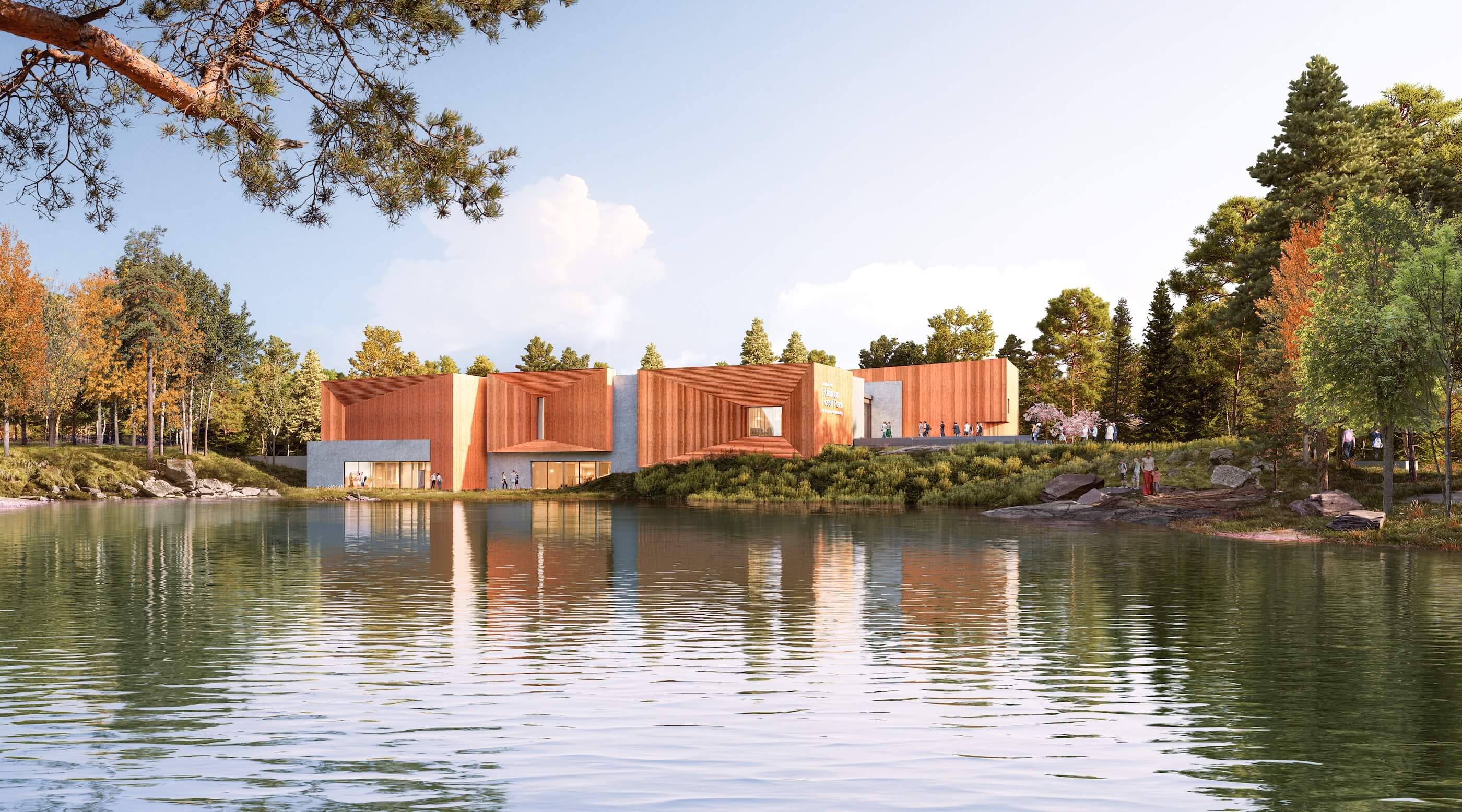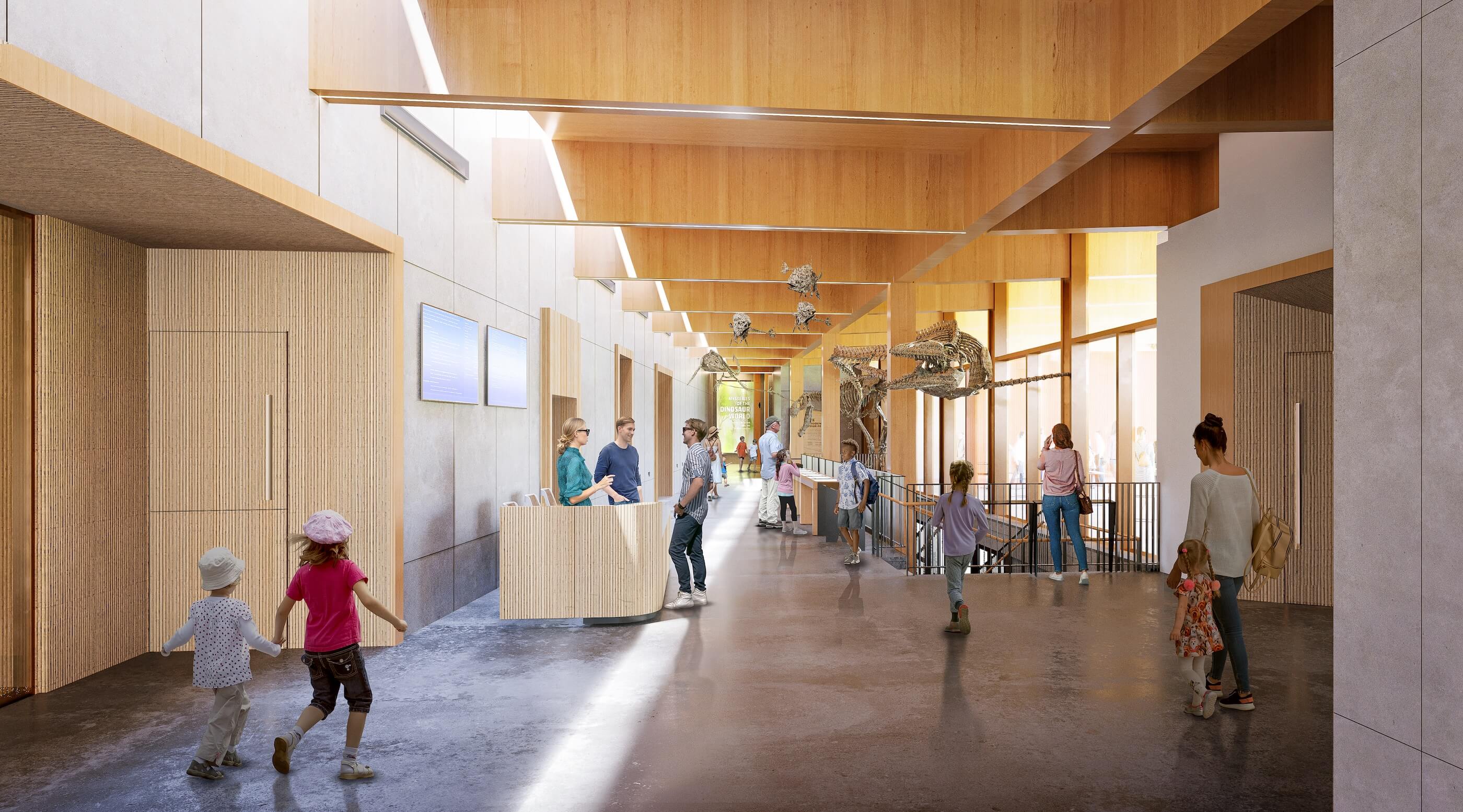An otherwise ordinary Wawa-dotted stretch of South Jersey might not be the first place you’d expect to find a major archaeological site containing thousands of fossils dating back some 65 million years. But, then again, the Garden State isn’t short of surprises. Nestled between Target- and Lowe’s-anchored strip malls in Mantua Township off of State Route 55, the 65-acre Jean and Ric Edelman Fossil Park of Rowan University is already widely considered as the best east-of-the-Mississippi spot to unearth marine and terrestrial fossils from the Late Cretaceous period. Frequent finds include sharks, sea turtles, marine snails, jumbo-sized primordial crocodiles, and mighty mosasaurs that ruled the prehistoric seas. (Much of South Jersey was once entirely underwater.)
In the not-so-distant future, the marl quarry-turned-fossil park will also be home to a state-of-the-art museum perched high above the site’s erstwhile industrial sandpit.
The 44,000-square-foot hybrid mass timber facility, designed by Ennead Architects with KSS Architects serving as the architect of record, is set to open to the public in 2023. Rowan University, a public research university located in nearby Glassboro, broke ground on the $73 million project this past weekend.

Joining New York-based Ennead Architects and the Princeton, New Jersey-based studio of KSS Architects on the core design team are exhibit designers Gallagher & Associates and landscape architects SEED Design/Yaki Miodovnik. Research at the site will continue to be led by Dr. Kenneth Lacovara, an esteemed paleontologist and geologist who serves as founding dean of Rowan’s School of Earth & Environment.
The museum will boast a slew of features sure to attract visitors by the busload off Exit 3 on the New Jersey Turnpike. Planned highlights include a trio of immersive fossil galleries, research workshops and hands-on learning experiences, full-scale skeletal reconstructions of prehistoric beasts, and a virtual reality chamber that transports guests back to the time of dinosaurs. A 150-person theater and event space, nature trails, paleo-themed playground, veranda-wrapped cafe overlooking the 4-acre quarry, and “live animal attractions” featuring guests with “genetic connections to the site” during the Late Cretaceous era will round out major elements of the Edelman Fossil Park Museum.
As detailed in a joint press release from both firms, the learning environment within the new museum building will be only part of the overall experience. After exploring the museum, visitors will be invited to descend into the quarry and dig for “non-scientifically significant” fossils right alongside “researchers working to uncover new information about the events that led to the world’s fifth mass extinction.”

After that, guests can bring whatever they’ve happened to unearth back to the museum where staff paleontologists and student scientists from Rowan will help them ID what exactly it is they’ve retrieved from the depths of the old quarry. (To date, only a few square hundred yards of the sprawling site have been fully excavated.) As noted by NJ.com, if visitors do happen to discover a specimen of significance, they’ll be required to hand it over to the university as stipulated in a waiver. Lesser treasures can be taken home as souvenirs.
As a press release further elaborated:
“The site plan is arranged carefully to maximize the visitor experience from entry to museum to quarry. Upon arrival, visitors are immediately enveloped in the landscape. Nature trails lead visitors to the learning experience inside the museum, which is followed by the discovery experience outside in the quarry, a sequence that is designed to unfold deliberately, as visitors transform into ‘citizen scientists.’
The circulation and design offer a complete process from start to finish, integrating the experience inside and outside and accentuating connections between the various elements of the park.”
From a design standpoint, the museum, a wood-clad concrete and timber structure with glulam columns, beams and cross-laminated timber roof decking, is notable for its rigorous embrace of sustainability. Once completed, the Edelman Fossil Park Museum is slated to be the largest public net-zero emissions building in New Jersey and the first Living Building Challenge project to achieve Zero Energy Certification in the state.

The museum will incorporate passive sustainable design strategies through its massing and orientation as well as active strategies like on-site production of renewable energy. The building will draw its power by a planned photovoltaic solar field while a geothermal, water-source heat pump system will “provide heating and cooling for the building, drawing from the constant temperature found deep within the earth to condition the interior spaces.”
The restorative landscape design of the surrounding park “preserves the traces of history—prehistoric and industrial—while reviving plant and habitat animals that will thrive in this environment.”
“When conceptualizing a design for the Edelman Fossil Park Museum, we drew inspiration from the incredibly unique nature of the site, as a window to another time on earth located in the most unlikely of places. The architecture functions as a set of conceptual lenses, each corresponding to a programmatic component and, much like a camera obscura, providing a glimpse of the realm beyond,” said Thomas J. Wong, design partner at Ennead Architects. “The deep-time perspective that the fossil record affords inspired a design that nestles within the natural landscape as a series of small-scale pavilions which serve to frame the evidence of past worlds, while opening up engagement with the present moment. Just as the site itself offers a view into the planet’s history and the devastation of mass extinction, the highly sustainable building looks to the future in the age of the Anthropocene.”

An economic impact study estimates that 200,000 or more fossil-hunting, dinosaur-loving visitors will descend on the park and museum annually, generating more than $300 million in economic activity over a 10-year period. Prior to the pandemic, the quarry site, which was purchased by Rowan University from the Inversand Company in January 2016 for $1.9 million, attracted thousands of amateur and degree-holding paleontologists every year. The arrival of the new museum and revamped landscaped is expected to truly put the park on the Cenozoic era map.











